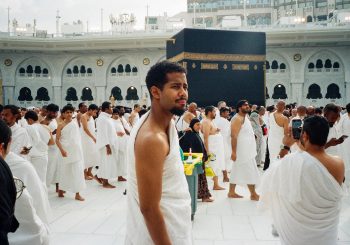
Across centuries, the Egyptian desert has bore witness to kings and prophets, messengers and messiahs, pariahs and pashas. Today, its history is a flood of religious love-stories and spiritual epics – from the pantheons of antiquity to Abrahamic tales: most present-day monotheistic religions bear the mark of Egypt in some capacity.
And they have left their mark upon Egypt in histories and monuments. Here is a celebration of three Cairene structures that have proven socially vital, religiously unparalleled, and architecturally stunning. These are capitals of historical worship and historical conquest.


The Hanging Church
Suspended on the ruins of an ancient fortress, the Hanging Church is one of Egypt’s oldest, most significant structures to date. Dating back to the 2nd century CE, it is a feature of Coptic Cairo and the seat of the Coptic pope. The location is said to have housed the Holy Family, consisting of the Virgin Mary, the Christ child, and Saint Joseph the Carpenter.
It is constructed using logs of palm and layers of stone, its ceiling a replica of Noah’s Ark. The Hanging Church is considered one of Egypt’s most unique feats of architecture, a mix of fresco and finesse, saturated with religious sanctuaries.
The church was renovated on several occasions during the Islamic era, under Caliph Harun al-Rashid and during the sovereignty of al-Aziz Billah the Fatimid.


Citadel of Cairo | Mohammed Ali Mosque
Glorious and historically saturated is the Citadel of Cairo: a massive medieval structure brought into being by Islamic king Salah al-Din al-Ayyubi (Saladin) in 1176 CE. Although not completed in his lifetime, it remains a dedicated fortress to the king. It was built on a promontory at the base of the Muqattam Hill, giving it strategic advantage and natural, locational defense. For nearly seven centuries, the Citadel was the seat of Egyptian rulers, and arguably, some of its bloodiest histories – most infamously, the Mamluk Massacre.
Despite its militarily formidable nature, the Citadel houses some of Cairo’s most elaborate, iconic mosques. This includes the commanding sight of the Mohammed Ali Mosque; visible from anywhere in the area, its minarets pierce the Muqattam skyline and make it a centerpiece of both ingenuity and worship.
Today, the Citadel is both a formidable monument and a standing museum.

%3Amax_bytes(150000)%3Astrip_icc()%2FGettyImages-528245190-5b436275c9e77c00372fddcb.jpg&f=1&nofb=1)
Synagogue of Ben Ezra
The most famous Jewish temple in Cairo carries the name of Ben Ezra: son of Ezra. Embedded into the essence of Coptic Cairo, the structure dates back to the 9th century CE, and today is home to a version of the Old Testament thought to have been written by Ezra himself. It is also the largest archive delineating the Jewish-Egyptian community’s turbulent history.
There are conflicting stories as to the location’s history; some sources argue that it is the very spot where Pharaoh’s daughter found Moses cradled in the reeds, and thus the original site for the Temple of Jerimiah. Others, namely al-Maqrizi, hold that the synagogue is a generational transformation of what was once St. Michael’s church.
Al-Maqrizi, as he was known, was a prominent Egyptian scholar during the medieval Mamluk era. He was diligent in documenting the acute ins and outs of historical happenings, with an “unusually keen interest in the Fatimid dynasty and its role in Egyptian history.”
The temple has gone through several cycles of restoration. The present structure dates back to 1892 after the original synagogue’s collapse.






Comment (1)
[…] Streets. Mona’s focus is tapered to issues of identity politics, culture, and social architecture.[…] A Year in Three Seasons: Ancient Egypt’s Calendar […]© 2019 Egyptian Streets. All Rights Reserved.Subscribe to the fastest growing newsletter in […]